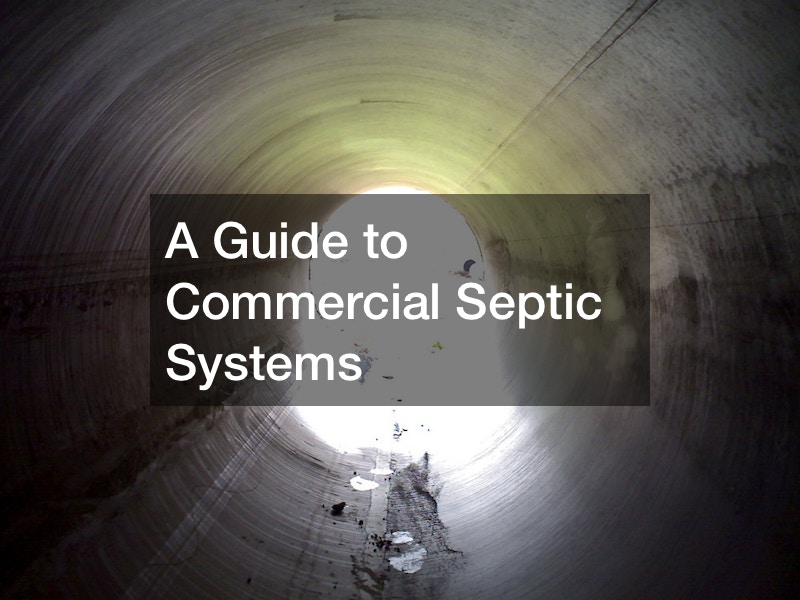A Guide to Commercial Septic Systems

Commercial septic systems are essential for businesses in rural or non-municipal areas, serving as a crucial means for managing wastewater. Understanding these systems’ key components and maintenance is vital for their efficient operation. This brief guide will explore the basics of commercial sewage systems.
- Components of a Commercial Sewage System: Commercial sewage systems are made up of a septic tank, distribution box, and drain field. Wastewater from the establishment flows into the septic tank, where solids settle and bacteria break down organic matter.
The clarified wastewater is then distributed through the distribution box into the drain field for further treatment.
- Regular Maintenance: Proper maintenance is crucial to avoid the need for commercial septic system repair. Regular pumping and inspection are essential to prevent solids from clogging the system. Routine distribution box and drain field checks are also necessary to ensure optimal functionality.
- Signs of Trouble: It’s important to recognize signs of distress in your commercial sewage system to address issues promptly. These signs may include slow-draining fixtures, odors, wet spots pooling water in the drain field, or gurgling sounds from plumbing fixtures. If any of these symptoms arise, seeking professional assistance for commercial septic system repair is advisable.
- Environmental Considerations: Commercial sewage systems have a significant impact on the environment. Proper maintenance and responsible use can reduce the risk of groundwater contamination and environmental damage. It’s important to follow all local regulations to protect the surrounding ecosystem.
.
Commercial septic systems are essential for businesses in rural or non-municipal areas, serving as a crucial means for managing wastewater. Understanding these systems’ key components and maintenance is vital for their efficient operation. This brief guide will explore the basics of commercial sewage systems.
- Components of a Commercial Sewage System: Commercial sewage systems are made up of a septic tank, distribution box, and drain field. Wastewater from the establishment flows into the septic tank, where solids settle and bacteria break down organic matter.
The clarified wastewater is then distributed through the distribution box into the drain field for further treatment.
- Regular Maintenance: Proper maintenance is crucial to avoid the need for commercial septic system repair. Regular pumping and inspection are essential to prevent solids from clogging the system. Routine distribution box and drain field checks are also necessary to ensure optimal functionality.
- Signs of Trouble: It’s important to recognize signs of distress in your commercial sewage system to address issues promptly. These signs may include slow-draining fixtures, odors, wet spots pooling water in the drain field, or gurgling sounds from plumbing fixtures. If any of these symptoms arise, seeking professional assistance for commercial septic system repair is advisable.
- Environmental Considerations: Commercial sewage systems have a significant impact on the environment. Proper maintenance and responsible use can reduce the risk of groundwater contamination and environmental damage. It’s important to follow all local regulations to protect the surrounding ecosystem.
.



